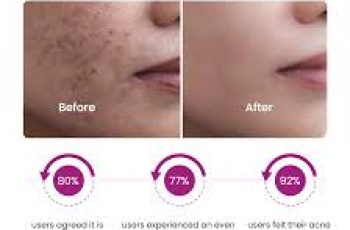
Skin Care Advice For Teenagers
As a teen or tween, you might begin to notice changes in your skin, and that products your friends like to use aren’t right for you. If this sounds familiar, then it’s time to dive into the world of personalized skincare! We’re here to guide you through the basics and get you started. In this blog, we’ll explore the different skin types, the importance of the right skincare routine, and how to make your skin glow with health and confidence. This is the ultimate guide to skin care advice for teenagers! So, let’s get started on this exciting journey to understanding and loving your skin!
Skincare for Tweens
First things first, let’s find out what your skin truly needs. We encourage you to take the Baumann Skin Type quiz, a tool used by dermatologists worldwide. This fun and simple quiz will tell you exactly what your skin needs. It considers factors like oiliness, sensitivity, pigmentation, and your skin’s tendency to develop wrinkles. By understanding your unique skin type, you can unlock the path to a skincare routine that’s perfect just for you.
Oily vs Dry Skin Types
Understanding your skin starts with differentiating between oily and dry skin types. If your skin often looks shiny, especially in the T-zone (forehead, nose, and chin), and you’re prone to acne, you likely have oily skin. Oily skin produces more sebum, which can lead to clogged pores. On the flip side, dry skin feels tight and might appear flaky or rough. Dry skin types struggles to retain moisture, making it feel dehydrated. Knowing whether you have oily or dry skin is crucial in choosing products that balance and nurture your skin.
Sensitive vs Resistant Skin
Sensitive skin reacts easily to products or environmental factors, showing signs like redness, itching, or breakouts. If you often notice your skin getting irritated with new products, it’s likely sensitive. Resistant skin, however, is like a low maintenance friend – it rarely complains and can handle various products without irritation. Knowing this will help you pick skincare items that are gentle and effective for your skin’s tolerance level.
Hyperpigmented vs Evenly Pigmented Skin
Hyperpigmented skin has areas of uneven color, like dark spots or patches, often due to sun exposure or acne scars. Evenly pigmented skin has a uniform color without noticeable dark areas. Understanding this aspect of your skin can guide you in choosing products that either help even out your skin tone or maintain its uniformity.
Skin Care Routine Steps
Embarking on a skincare journey begins with understanding the essential steps of a routine tailored to your needs. Let’s dive into the crucial components of a teenage skincare routine, each playing a unique role in nurturing and protecting your skin. For specific information on the best face washes, check out this blog!
Cleanser: The foundation of any skincare routine. They remove dirt, oil, and impurities. Choose a cleanser based on your skin type – gentle and hydrating for dry skin, and oil-free for oily skin.
Eye Cream: An often-overlooked step but vital for keeping the delicate skin around your eyes nourished and protected.
Toner or Serum: Toners are great for oily skin, helping to remove excess oil and tighten pores. Serums, on the other hand, work for all skin types. They are packed with active ingredients targeting specific skin concerns.
Moisturizer: Essential for all skin types, moisturizers keep your skin hydrated and healthy. Oily skin types should go for lightweight, non-comedogenic moisturizers, while dry skin types may need something more hydrating.
SPF: Sunscreen isn’t just for the beach; it’s a daily necessity. It protects your skin from harmful UV rays, preventing premature aging and skin damage.
comedogenic ingredients
Comedogenic, Acne Causing Ingredients
Comedogenic ingredients can clog pores, leading to breakouts. Common examples include coconut oil, cocoa butter, evening primrose oil, soybean oil, and even olive oil. Always check product labels for these ingredients if you are prone to clogged pores or acne of any kind.
Check out this blog on how to treat pimples so they don’t leave long lasting scars!
Sun Exposure and Anti-aging Regimens
Sun exposure is a major contributor to wrinkles. It’s never too early to think about anti-aging regimens, but a good age to start antiaging practices is in your late teens or early twenties. Incorporating SPF and antioxidant-rich products can make a big difference.
Darker Skin Tones
Regardless of your skin tone, the basic steps of skin care remain the same. We are, after all, each just human beings. There are just a few issues more common for dark skin tones than lighter tones. For those with black or dark skin tones, dealing with ashy skin caused by dryness can be a common issue. Hydrating and nourishing your skin with rich moisturizers and natural oils can help. Also, products with ingredients like shea butter and jojoba oil are excellent for maintaining healthy, glowing skin.
Another skin concern that is more common in darker skin tones is actually ingrown hairs, AKA pseudofolliculitis barbae. There are even specific strategies for treating dark spots on black skin if you notice discoloration following an ingrown hair.
shaving
Shaving
Shaving is more than just a rite of passage; it’s an essential aspect of skincare, especially during the teenage years when your skin is adapting to new changes. Proper shaving techniques are crucial to avoid irritation, cuts, and ingrown hairs, which can be a real hassle for your skin. Check out this blog dedicated to the best shaving practices!
Skin Type Solutions Youtube Channel
We hope this guide helps you feel more confident and informed about taking care of your skin. Every teen’s skin is unique, and embracing your individuality is key. For more fun and informative skincare tips, don’t forget to check out our new YouTube channel. We’ll be sharing more insights, routines, and answers to all your skincare queries. Here’s to happy, healthy skin!


